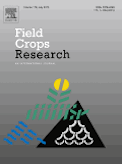
Abstract: In the high-yielding wheat production systems in Northwest (NW) Indo-Gangetic Plains of India, intensive tillage operations and blanket fertilizer recommendations have led to high production costs, decreased nutrient use efficiency, lower profits and significant environmental externalities. No-tillage (NT) has been increasingly adopted in this region to reduce costs and increase input use efficiency. But, optimal nutrient management practices for NT based wheat production are still poorly understood. Opportunities exist to further enhance the yield, profitability, and resource use efficiency of NT wheat through site-specific nutrient management (SSNM).
On-farm trials were conducted in seven districts of Haryana, India for two consecutive years (2010–11 and 2011–12) to evaluate three different approaches to SSNM based on recommendations from the Nutrient Expert® (NE) decision support system in NT and conventional tillage (CT) based wheat production systems. Performance of NE based recommendations was evaluated against current state recommendations and farmers’ practices for nutrient management. Three SSNM treatments based on NE based recommendation were (1) ‘NE80:20’ with 80% N applied at planting and 20% at second irrigation (2) ‘NE33:33:33’ with N split as 33% basal, 33% at Crown Root Initiation (CRI) and 33% at second irrigation; and (3) ‘NE80:GS’ with N split as 80% basal and further application of N based on optical sensor (Green Seeker™)-guided recommendations. Yield, nutrient use efficiency and economic profitability were determined following standard agronomic and economic measurements and calculations. Cool Farm Tool (CFT), an empirical model to estimate greenhouse gases (GHGs) from agriculture production, was used to estimate GHG emissions under different treatments.
Wheat grain and biomass yield were higher under NT in 2010–11 but no difference was observed in 2011–12. The three NE-based nutrient management strategies increased yield, nutrient use efficiency as well as net return as compared to state recommendation and farmers’ fertilization practice. Global warming potential (GWP) of wheat production was also lower with NT system as compared to CT system and NE-based nutrient managements as compared to farmers’ fertilization practice. State recommended nutrient management had similar GWP as NE-based nutrient managements except NE80:GS in which GWP was the lowest. Results suggest that no-tillage system along with site-specific approaches for nutrient management can increase yield, nutrient use efficiency and profitability while decreasing GHG from wheat production in NW India.








